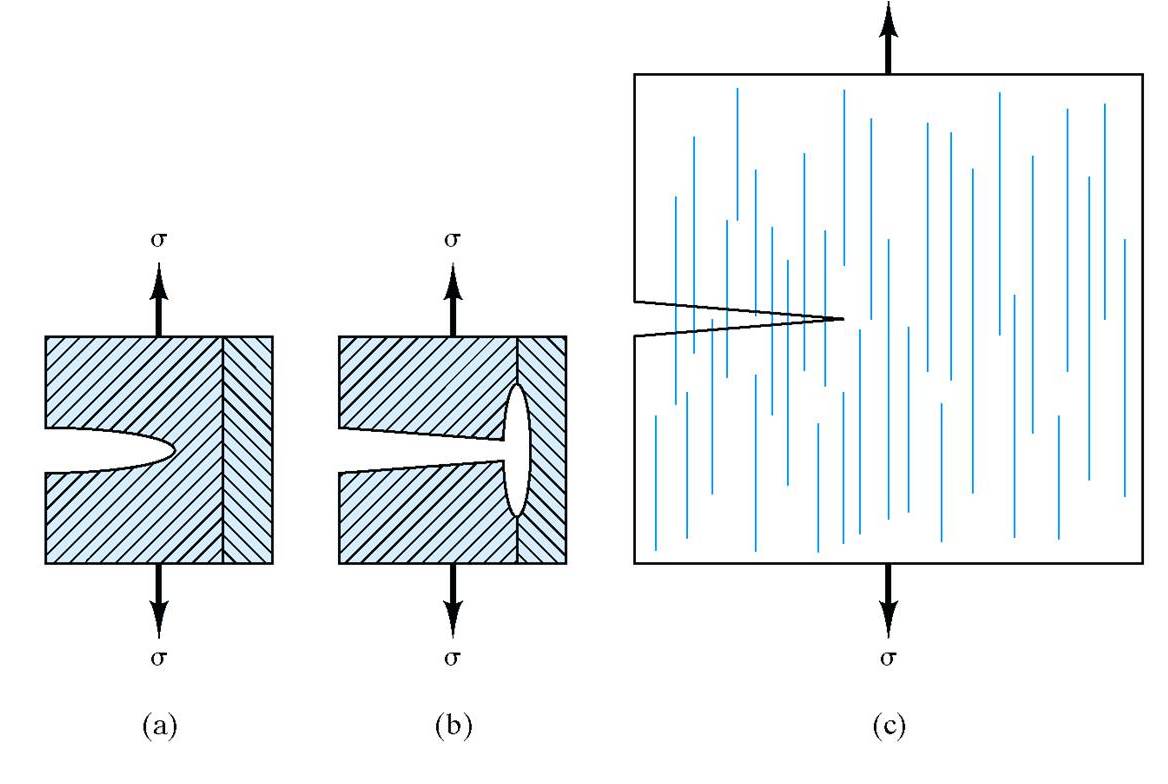Interfacial Strength
The
interfacial strength refers to the strength of the bond between the
matrix phase and the dispersed phase. Usually interfacial strength is
desired.
Interfacial Strength in PMCs and MMCs
In polymeric matrix and metal matrix composites high
interfacial bonding is desirable so that the stress can be transmitted
from the matrix phase to the dispersed phase in order to maximize the
overall composite strength. (The dispersed phase is usually the stronger material.) If
the bond between the matrix phase and the dispersed phase is not strong
enough to transmit the stress, then the reinforcing phase slips out of
the matrix and the strength of the fibers will not be transmitted
to the matrix.
Interfacial Strength in CMCs
A
case where interfacial strength is not desirable is the
case of ceramic matrix composites. In these composites failure
originates in the matrix. In order to maximize the fracture toughness
for these, it is desirable to have a relatively weak interfacial bond
allowing the fibers to pull out. As a result, a crack initiated
in the matrix can be deflected along the fiber-matrix interface.
This improves fracture toughness.
In
this picture we we see a matrix crack approaching a fiber in figure
(a).
It is deflected along the fiber-matrix interface as shown in
figure (b).
For the overall composite shown in figure (c), the
increased crack path length due to fiber pullout significantly improves
fracture toughness.

Factors to consider for interfacial bonding:
- surface treatment
- chemistry
- temperature
